Myths and facts about sunscreens || Best way to apply sunscreen
Our skin is more susceptible to the sun’s harmful ultraviolet radiation – UVA, UVB, and UVC.
So, we never want our skin to get damaged by such harmful rays. Sunscreens are right up one’s alley to protect the skin.
However, there are some misconceptions in choosing a perfect sunscreen. So, let’s bust such myths of sunscreens.
Myths and Facts about sunscreens
MYTH No1: I have dark skin, I can stay unprotected longer time in the sun
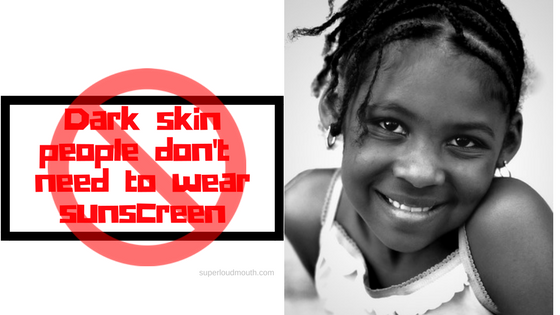
Apparently, darker skin people have a compound called “Melanin”. Many people believe that this compound can prevent them from the hazardous effects of sun rays. That’s totally a misconception. With melanin, you’re less likely to get sunburnt but that doesn’t mean you’re fully protected. Melanin can protect to a certain extent and it has nothing to do with cancer, sunburns and ageing when people spend long hours in the sun unprotected. So, without wearing sunscreen the darker skin people need not bother only about tanning.
MYTH No2: I’ve applied sunscreen, I can stay longer time exposed to the sun
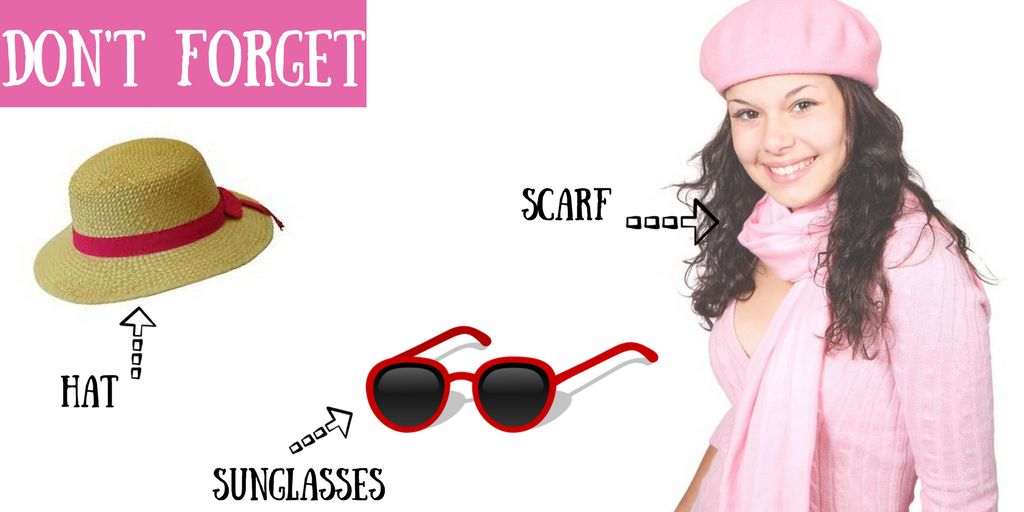
Can you? Well, certainly you cannot. No sunscreen can protect you completely from all the sun rays. It cannot penetrate into deep layers of skin. Without getting absorbed into the skin, sunscreen just protects the base. So, when you put on a sunscreen and stay a long time in the sun you may get unprotected. Dermatologists recommend wearing a hat, sunglasses, scarfs, long sleeves which cover the shoulders and hands. Moreover, don’t go long hours in the sun getting bronzed.
MYTH No3: I’ve fair and sensitive skin, I get sunburnt easily, so I should get a higher SPF sunscreen
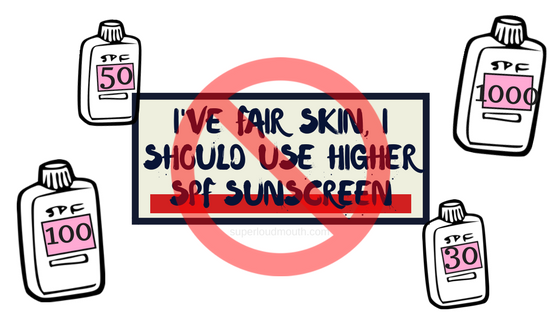
Sun protection factor or SPF is a gauge which tells how much time a person can stay in the sun protected. It doesn’t mean if you put on a sunscreen with SPF 50, you can stay the whole day burning in the sun. SPF only indicates the amount of time you need to reapply the sunscreen.
Look for the “Broad spectrum” label on sunscreens which can protect you from UVA and UVB rays. Also, the sunscreens recommended for sensitive skin has quite a few ingredients like Titanium dioxide and zinc oxide. They do not contain preservatives, parabens or fragrances.
MYTH No4: I use a higher SPF sunscreen, it gives me stronger protection
Like I said, SPF is a gauge which tells you how much time you should be in the sun. That said, the SPF factor is an indicator of how many minutes later you should put on the sunscreen again. Scientifically, it has been proven that the skin burns after 15 mins. If you apply a sunscreen with SPF 15, then 15 times 15 is 225. So, you need to apply every 225 minutes which is 3 hours and 45 minutes.

So, how much higher SPF sunscreen you would go for, the longer you will be protected but not higher. [1]
Disclaimer: Expensive sunscreens also don’t offer high protection and it has been proven in most cases. You should probably pick the one which satisfies your skin texture rather than looking for a steep product.
MYTH No5: Sunscreen is always necessary
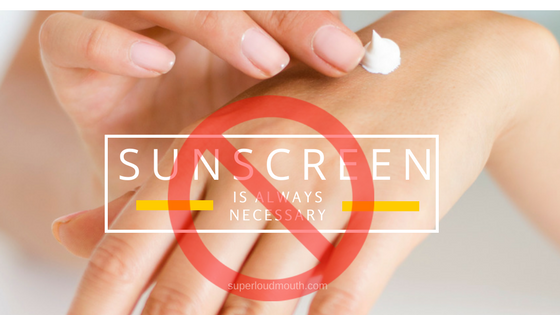
This is the most common myth which many people believe that when you’re in closed spaces like at homes you need to wear sunscreen. This is a big misconception. When you often use sunscreen, skin starts ageing quickly. Over and above that some people have a habit of applying sunscreen while hitting the hay thinking the lights also emit UV rays. But there’s no need to apply such products with SPF at night coz sunscreen cannot penetrate into deeper levels of the skin. Instead, replace it with a moisturizer which goes into deeper layers and keeps your skin buttery soft.
MYTH No6: I just put on sunscreen to my face
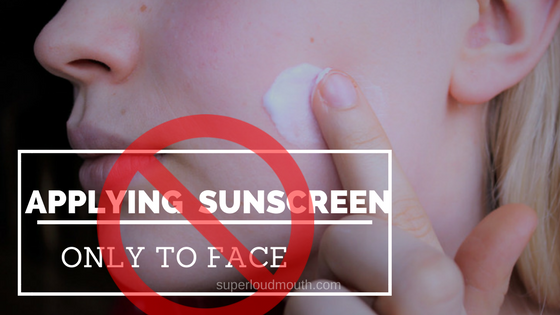
Sun rays do not leave you, they’re not only vulnerable to your face. All the exposed parts get equally damaged by sun’s harmful rays. Like how you diagnose early ageing, and wrinkles on your face, you’ll tend to see the same effects on all the exposed parts.
MYTH No7: Different products with SPF, offer higher protection

You might think using different SPF products like sunscreen with SPF 30, moisturizer with SPF 15, a foundation with SPF 50 will give you high protection but it doesn’t work so. Experts claim that while you use different SPF products, the product which has highest SPF times 15 (i.e the time after which the skin burns) is the time you’re safe in sun.
For instance, if you’ve applied a moisturizer with SPF 15 + sunscreen with 30 SPF + foundation with SPF 50. In these three products foundation has the highest SPF of 50. So, the highest SPF X 15 will be time to reapply sunscreen. [2]
MYTH No8: I use water-resistant or waterproof sunscreen, I don’t get sunburnt in water
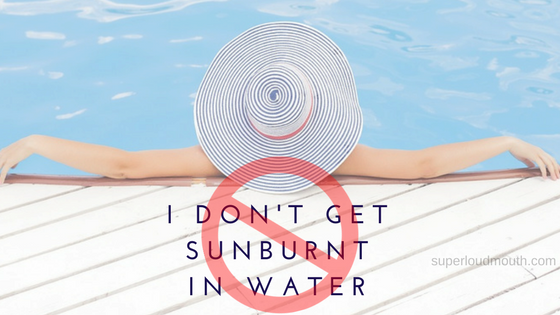
Certainly, a big fat hoax. Water actually reflects back the UV rays making us get more exposed to sun rays. Even if you sit underneath an umbrella, you will get sunburnt because the sand also reflects UV rays.
Applying a water-resistant sunscreen will last up to 40 minutes or some may also stay up to 80 mins and then you should reapply sunscreen. A waterproof sunscreen is not really waterproof, it stays up to 80 minutes and then you need to reapply it. So, if you sweat a lot, go for swimming or sunbaking make sure to reapply sunscreen after every 40 or 80 minutes depending on the sunscreen you use.
MYTH No9: Sunscreen lowers vitamin D, they contain chemicals which cause breakouts!!

Experts say that you need to get exposed to sun just for 15 minutes in order to get Vitamin D and beyond that apparently, the body doesn’t produce vitamin D. So, probably we need not bother about applying sunscreen.
Furthermore, some lab studies have proven that the fragrances, preservatives, and parabens may cause skin allergies but there were no cases which diagnosed health issues. Sensitive or acne prone skin people can use the sunscreens which do not contain alcohol, oils, parabens, fragrances which may sometimes lead to skin irritation.
Skin breakouts are caused when you don’t wash your face which has sunscreen while hitting the bed. Because sunscreen doesn’t allow any particles to penetrate deep into the skin. [3]
MYTH No10: Sunscreen can stop you from tanning
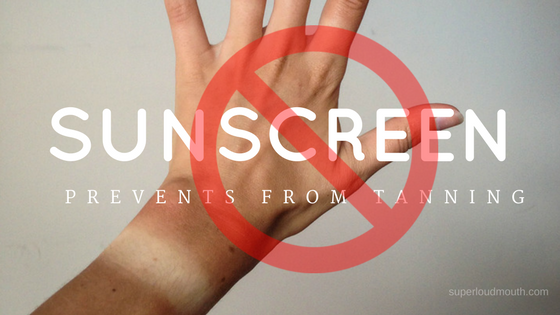
No Sunscreen can protect you completely from all the rays. You will get sun-bronzed if you stay a long time in the sun. Reapplying sunscreen based on what SPF you use only can prevent you to a certain extent. But stay away from the scorching sun as far as possible.
How to apply sunscreen?
Sunscreen alone cannot prevent you from vulnerable rays, also you should know when and how to apply the sunscreen. How important it is to choose a perfect sunscreen, using it correctly is equally important.
Dermatologists suggested tips:
> Apply considerable amounts of sunscreen to every part of the body and face not leaving the areas like ears, neck, feet and lips. If you apply in little quantities, despite using an SPF 50 you will be less benefited.
> Wear it 30 minutes before you head out in hot sun.
> Check for the expiration of product coz using an expired sunscreen can cause inflammation, acne breakout or skin burning.
> Ensure to use a sunscreen which is “broad spectrum” labelled or which has active ingredients like Titanium dioxide and zinc oxide.
> Mostly try to stay in shade.
> Drape scarf over shoulders, wear sunglasses, a wide hat. These additionally protect the skin as sunscreen alone cannot do the work.
Image courtesy Pixabay, 4, 5, 6, 10
Also Read:

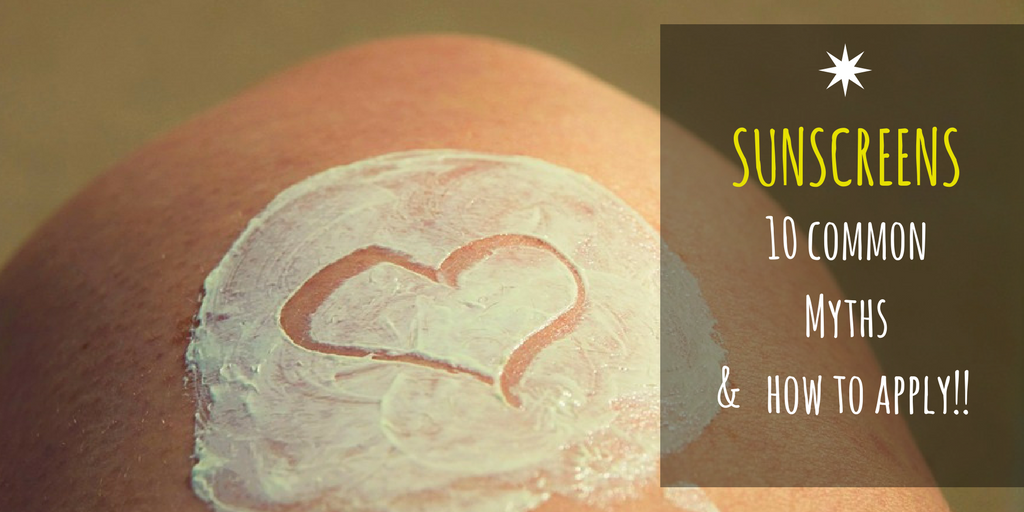
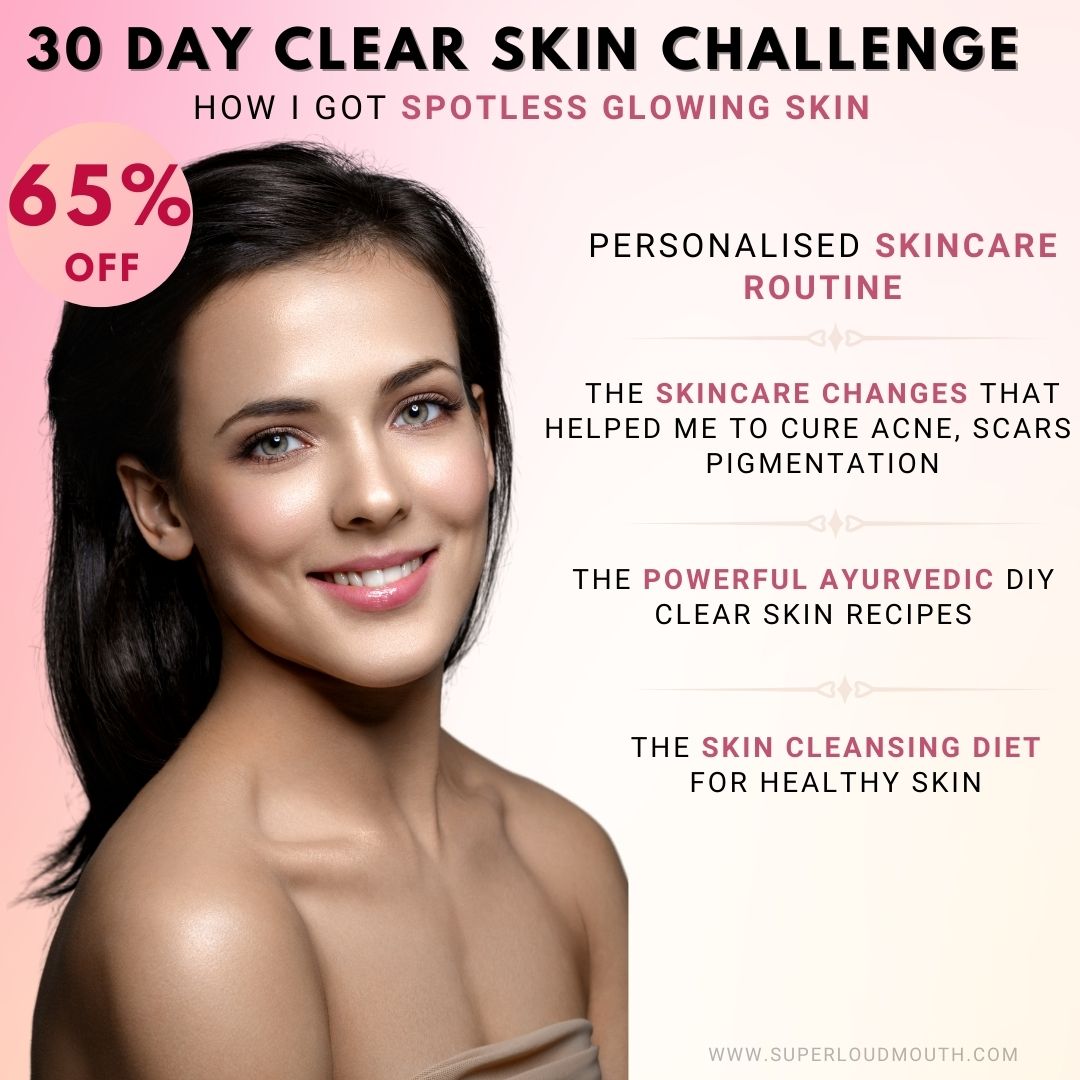
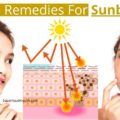

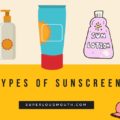
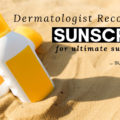

Thanks for sharing,sun rays make us look older than we actually are but many ignore applying sunscreen maybe not knowing which one they need.Very informative and well written
Thank You!!